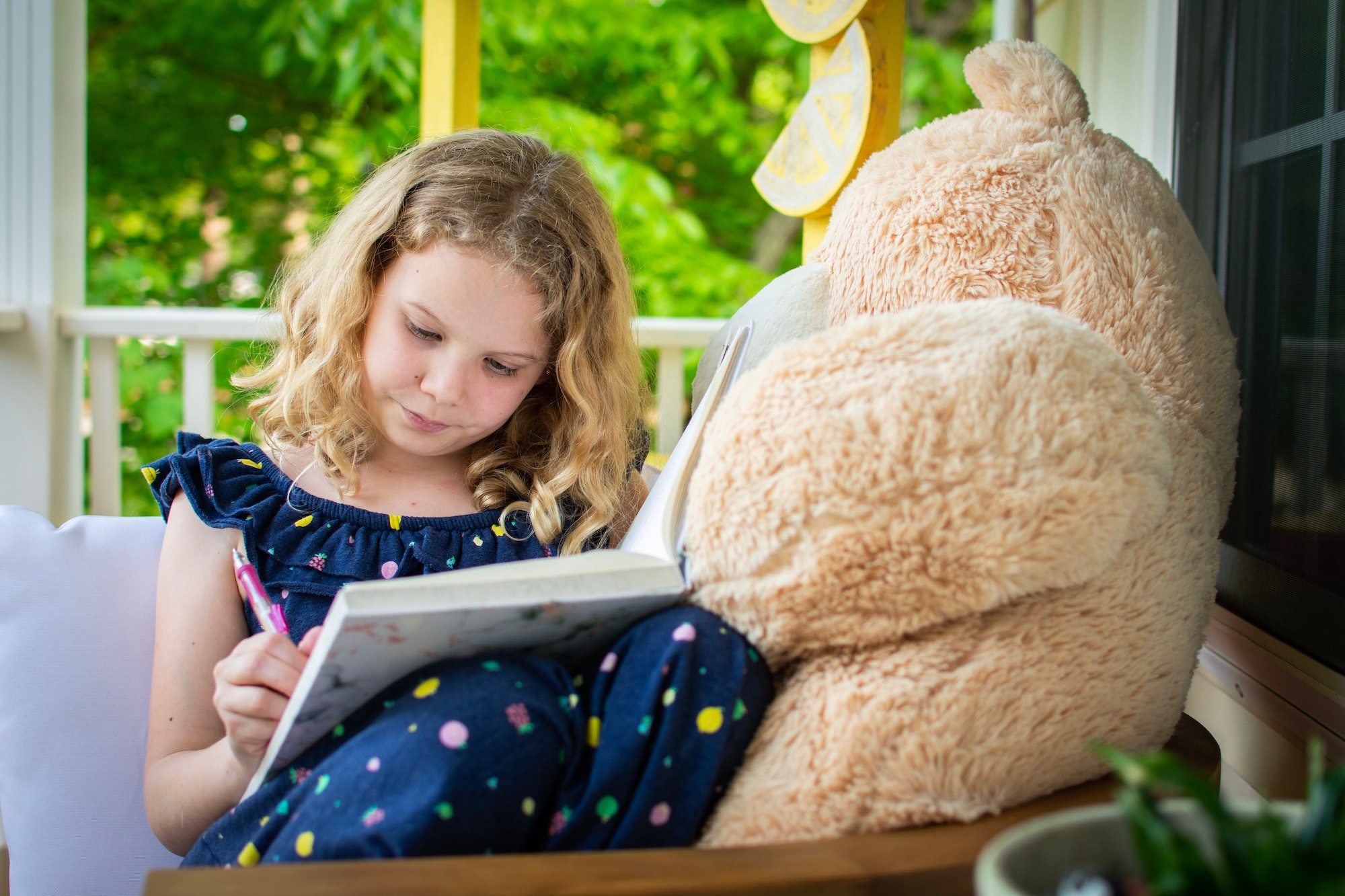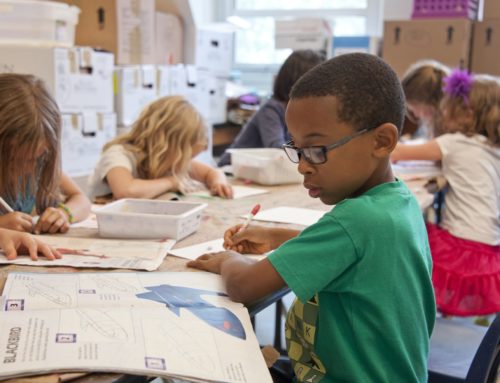For me, growing up in a household where feelings were rarely discussed, journaling was a lifeline — a way to process the big emotions and ordinary calamities of childhood. As an adult, a consistent journaling practice has helped me cement memories, seemingly immutable at the time, but ephemeral and indistinct when viewed from the distance of years: studying with my future husband as the dawn light filtered through library windows; the heavy weight of my newborn son, drowsy with milk, in my arms; early Sunday mornings that unfailingly began with my toddler daughter launching herself into our bed.
So I had already decided that I’d thrust a diary into my children’s hands as soon as they were capable of gripping a pen (or crayon). Early attempts, however, were sporadic and haphazard. But when the pandemic started to transform our lives in the spring, I revisited the idea of journaling with my children (ages 9, 7 and 4), in the hope that it would help expand their interior world as their external one contracted.
Benefits of journaling
Research and anecdotal evidence point to the many physical and mental health benefits of journaling; chief among them are better immune system function, stress reduction and lower rates of depression. Emily Edlynn, a child psychologist based in Illinois, encourages her patients to journal as a way of “managing difficult emotions — to externalize them and get them out of their heads and on to paper.” Holding in these negative emotions, Edlynn says, “is one of the risk factors for depression and impairs our health, both mentally and physically.”
According to Edlynn, this exercise is an important step in “developing emotional literacy, or the idea of being able to recognize and name a variety of emotions.” Through this process of expressing their feelings, children can begin to make sense of them, which builds self-awareness and emotion-regulation skills.
Journaling also helps “kids be present-minded and reflect on what’s happening today, what they’re going through now,” says Joshua McKivigan, a behavioral health therapist who works with high school students in Pennsylvania. In the context of the current crisis, this awareness can tame the anxiety that often comes when we’re confronted with uncertainties.
So what strategies can parents employ to jump-start and maintain a consistent journaling practice with their kids?
Let kids take the lead
McKivigan suggests letting children take the lead and have a hand in developing what journaling will look and feel like for them. “Whenever kids have that buy-in,” he says, “there’s a better success rate than if we put our adult stamp on it. Let them have that freedom of expression.”
Part of this freedom includes encouraging children to choose their own journaling tools and getting them excited about the activity, says Melina Zahalka, an educational psychologist and mother of two in Washington. She equates it to splurging on workout clothes: “You’re more likely to work out if you have really nice workout clothes and you’re not going in your sweats.” For some children, this can mean picking out a pretty journal that reflects their personality (my daughter once chose a journal covered in pink sequins), while others may gravitate toward a pen that feels good to write with. Other tools that are fun to incorporate in journaling (especially for younger kids) are stickers, glitter pens and markers.
Make it a family affair
For Leigh Shulman, a writing teacher in Argentina, journaling is an opportunity to strengthen her connection to her children. Every Friday evening, she sets aside time to write with her 16-year-old daughter and 6-year-old son. Sometimes she’ll provide a prompt, but often the activity is unstructured. “The key,” she says, “is really letting it be as open as possible and just to try to make it really different from schoolwork.” Her only rule is “no phones and no other distractions.”
McKivigan agrees that journaling shouldn’t be an additional source of stress and obligation. “Give them a way to start that’s simple — so perhaps they just write half a page or however much they can and work their way up.” With patients, he tries to keep the introductory phase realistic to initiate the habit, rather than to rush to a lengthier long-term goal.
Once that habit is set, however, it’s often easy to maintain. “Kids thrive on routine,” Zahalka says. Although her children initially balked at the post-lunch journaling routine she established for them, it soon became a valuable part of their daily creative play.
Be open to the possibilities
When people think of journals, they may have an image of a traditional volume filled with a daily catalogue of events and experiences. But journals don’t have to adhere to this narrowly defined role. Ideally, they should be a safe space for exploration and self-expression, and can therefore reflect the interests and developmental stage of their creator.
“Younger children are very visually motivated,” Zahalka says. Photovoice, a technique borrowed from the field of social work, can therefore be a powerful starting point for children who are “unsure of their own identity and their own voice.” Children photograph something that is meaningful to them and then use that photo to spur their writing, developing a narrative around the subject. Zahalka, for example, recently asked her 7-year-old to take a photograph of something she misses. After her daughter returned with a photo of their neighbors, she wrote a paragraph that explained why she missed being around people. Similarly, writing prompts (“Describe your perfect day,” “What is the one thing you can’t imagine living without?”) are also frequently used to spark creativity.
For children who can’t write yet, journaling could include drawing or making collages out of magazine cutouts. My 4-year-old draws family scenes studded with golfball-size viruses on loose sheets of paper that we later staple together. And older children, if they aren’t comfortable with more formal writing, can create bulleted lists around common themes (places they want to visit, goals they want to achieve) or record video or audio logs.
Journaling can also be used to communicate in a more direct way via a back-and-forth journal, where the child and parent take turns expressing what they want the other to know but find challenging to say aloud. You can buy structured journals like this, or you can easily create one with a blank notebook.
Allow for reflection
Ultimately, journaling is a reflective practice, and therefore, “it’s important to have children go back and think about what they wrote and ask them how they feel about it now” — whether it’s a week or a year later, Zahalka says. And of course, journals created today will one day be of historical interest as a window into this strange time.





Leave A Comment